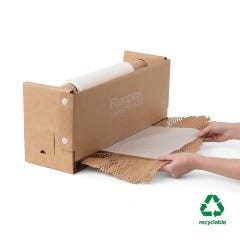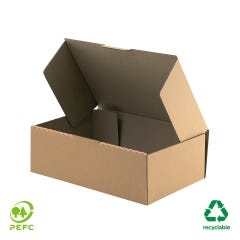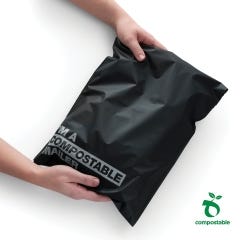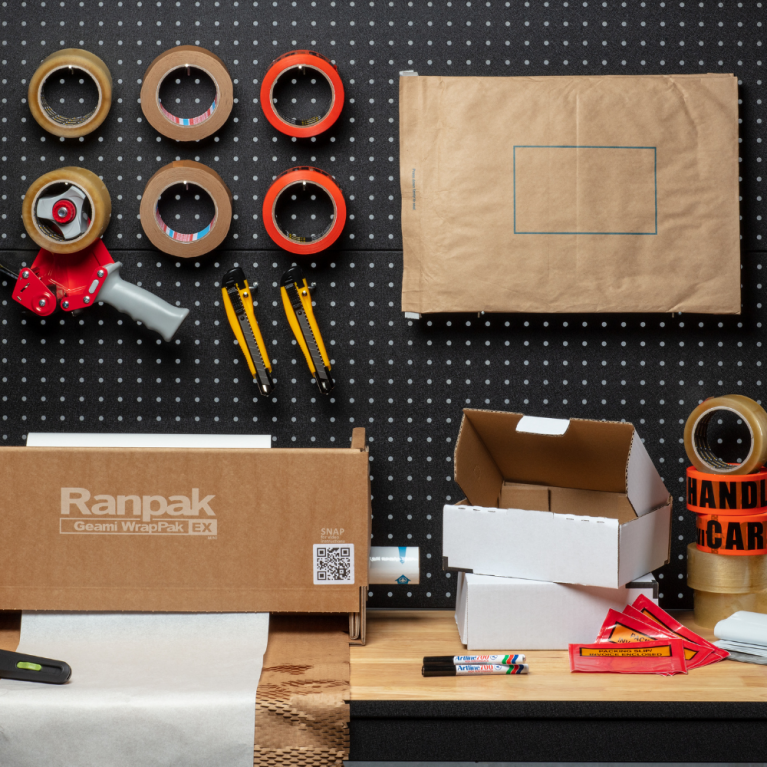
The last but also the most important step to setting up your eCommerce business is shipping your products. Look no further than Signet's guide to small business shipping and maximise customer satisfaction through delivery.
In the era of eCommerce, online shoppers are becoming a lot more demanding. They want faster delivery, a better unboxing experience, transparency, an easier returns process, and the list goes on. For a large company, it's just another day in the office, but when you’re a small business this can be a lot to compete with.
We understand how you manage your shipping process can make or break a business, which is why we've put together this guide to get you sending your products across Australia.
1. Choosing a packaging solution


The first step in finding a packaging solution is finding one that fits your products. Shipping providers will often use dimensions or weight to figure out your shipping costs, so the more unnecessary packaging you can eliminate while still protecting your product, the better on your pocket and the environment.
However, in the eyes of the modern consumer finding the right packaging solution is about much more than just safely getting a product from A to B. As well as being the right fit, it should also align with your brand, deliver a memorable ‘unboxing experience’, and consider the environment.
The ‘unboxing experience’ has also become a high priority for eCommerce businesses. Research states that 40% of customers will regularly post interesting packaging or unboxing videos on social media. Giving your packaging the ‘glow up’ it deserves and creating an experience for your customers will not only make your brand memorable but can increase user generated content (UGC) and in turn brand awareness for your business.
Lastly, with the rise of the conscious consumer, considering the environmental impact of your packaging, i.e. how it’s made and disposed of, is quickly becoming non-negotiable. By choosing sustainable options, you help reduce your impact on the environment and improve brand perception. A study has shown that 74% of consumers are willing to pay more for a product with sustainable packaging
2. Finding a shipping provider


If you’ve already set sail your shipping journey or even shopped online you would know there are many Australian shipping providers, and it can be a lot to know which is the best fit for you. When looking for the right provider there are a few factors you should consider, besides the shipping rate.
While getting a good rate for your customers is essential, you also want to make sure your provider has top notch customer service. A poor delivery experience can leave a lasting impression on your customers that may just stop them coming back. Research the reviews on the shipping provider to see what other customers and businesses have said, and watch any complaints from your customers to ensure the standard is upheld.
Although, customer service includes much more than just the delivery driver. Think about the communication your shipping provider will give your customers once their order leaves your warehouse, garage or living room. You can never underestimate the power of information in enhancing the delivery experience or reviving a bumpy one.
Additionally, think about how easy it is to ship your packages with the provider. Whether you have to drop them off or they pick them up may not matter in the beginning of your business, but as you grow having that flexibility can greatly benefit your efficiency.
Finally, more businesses are doing a deep dive into their shipping process and its impact on the environment. If this is something that speaks to your business and customer values, consider looking into a carbon neutral shipping provider, such as Sendle.
3. Figuring out shipping options and rates


Did you know? A study by UPS and comScore reported that shipping costs are one of the biggest causes of cart abandonment and the best reason to nail this part of your eCommerce strategy.
The greatest hurdle for small businesses is the expectation from customers of free shipping. If you can afford to absorb shipping costs into your product price and offer free shipping, that will be one of the best marketing tools to get your customers over the line. Even if you can offer free shipping over a minimum amount, it will help persuade customers to complete their purchase and also increase your average order value.
However, this may not be possible for many small businesses, and you will have to pass on some of the cost. So, when deciding on your shipping options, ask yourself, who are your customers and what they would want? Do they expect express delivery or tracking? Where are they located? How big will your average order be? Will you charge a flat rate, or will it vary based on the size of the order?
You may not have the answer right now, but it’s important to think about because it all comes at a cost, and some of those costs may deter customers from transacting. However, when passing on shipping costs, you should also be transparent and inform your customers about why it costs what it does.
While shipping can be one of the more complex steps to setting up your eCommerce business, it doesn’t have to be. View it as an opportunity to drive sales and customer loyalty by delivering both a cost effective and customer-centric experience.
To get started shop our full eCommerce packaging range here, or to talk to our team call 13 7446, email sales@signet.net.au, or Live Chat with us by visiting www.signet.net.au.










